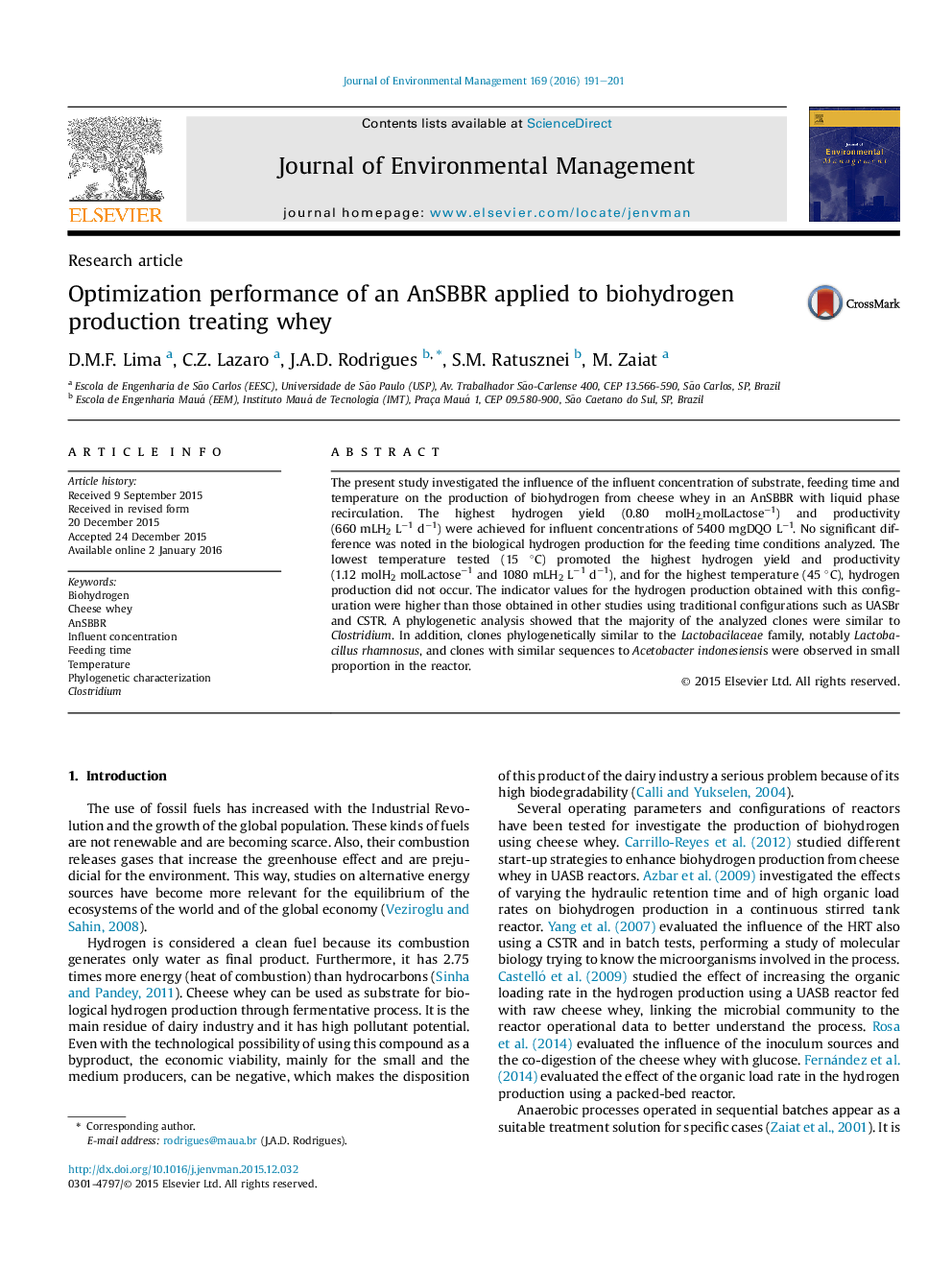| Article ID | Journal | Published Year | Pages | File Type |
|---|---|---|---|---|
| 1055450 | Journal of Environmental Management | 2016 | 11 Pages |
•An AnSBBR was applied for biohydrogen production by treating cheese whey wastewater.•For the influent concentration, the intermediate value of 5400 mgCOD L−1 was the best.•The filling time had no clear influence on the process.•The lowest temperature (15 °C) showed the best results in all the work.•The majority of the analyzed clones were similar to Clostridium.
The present study investigated the influence of the influent concentration of substrate, feeding time and temperature on the production of biohydrogen from cheese whey in an AnSBBR with liquid phase recirculation. The highest hydrogen yield (0.80 molH2.molLactose−1) and productivity (660 mLH2 L−1 d−1) were achieved for influent concentrations of 5400 mgDQO L−1. No significant difference was noted in the biological hydrogen production for the feeding time conditions analyzed. The lowest temperature tested (15 °C) promoted the highest hydrogen yield and productivity (1.12 molH2 molLactose−1 and 1080 mLH2 L−1 d−1), and for the highest temperature (45 °C), hydrogen production did not occur. The indicator values for the hydrogen production obtained with this configuration were higher than those obtained in other studies using traditional configurations such as UASBr and CSTR. A phylogenetic analysis showed that the majority of the analyzed clones were similar to Clostridium. In addition, clones phylogenetically similar to the Lactobacilaceae family, notably Lactobacillus rhamnosus, and clones with similar sequences to Acetobacter indonesiensis were observed in small proportion in the reactor.
